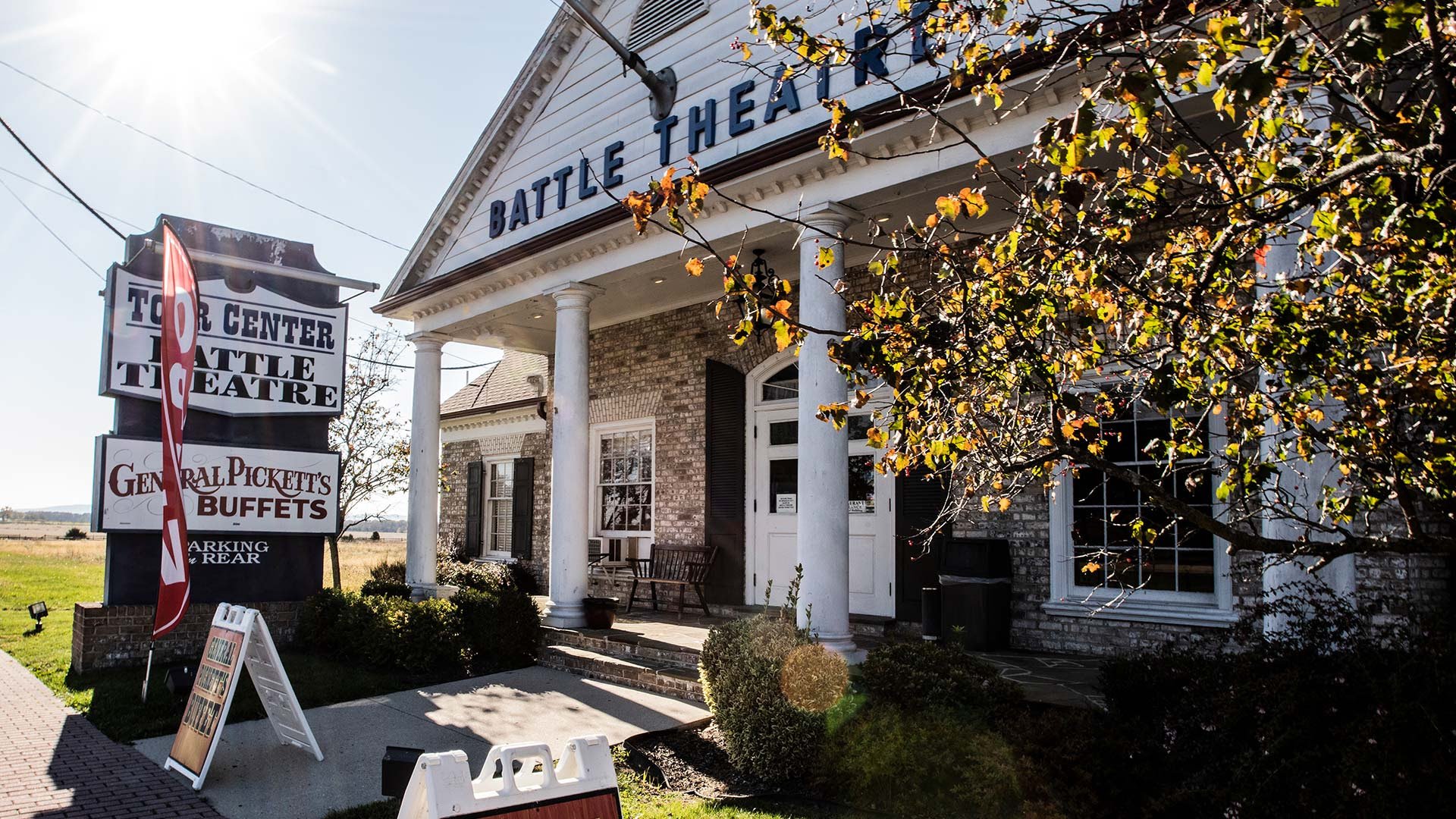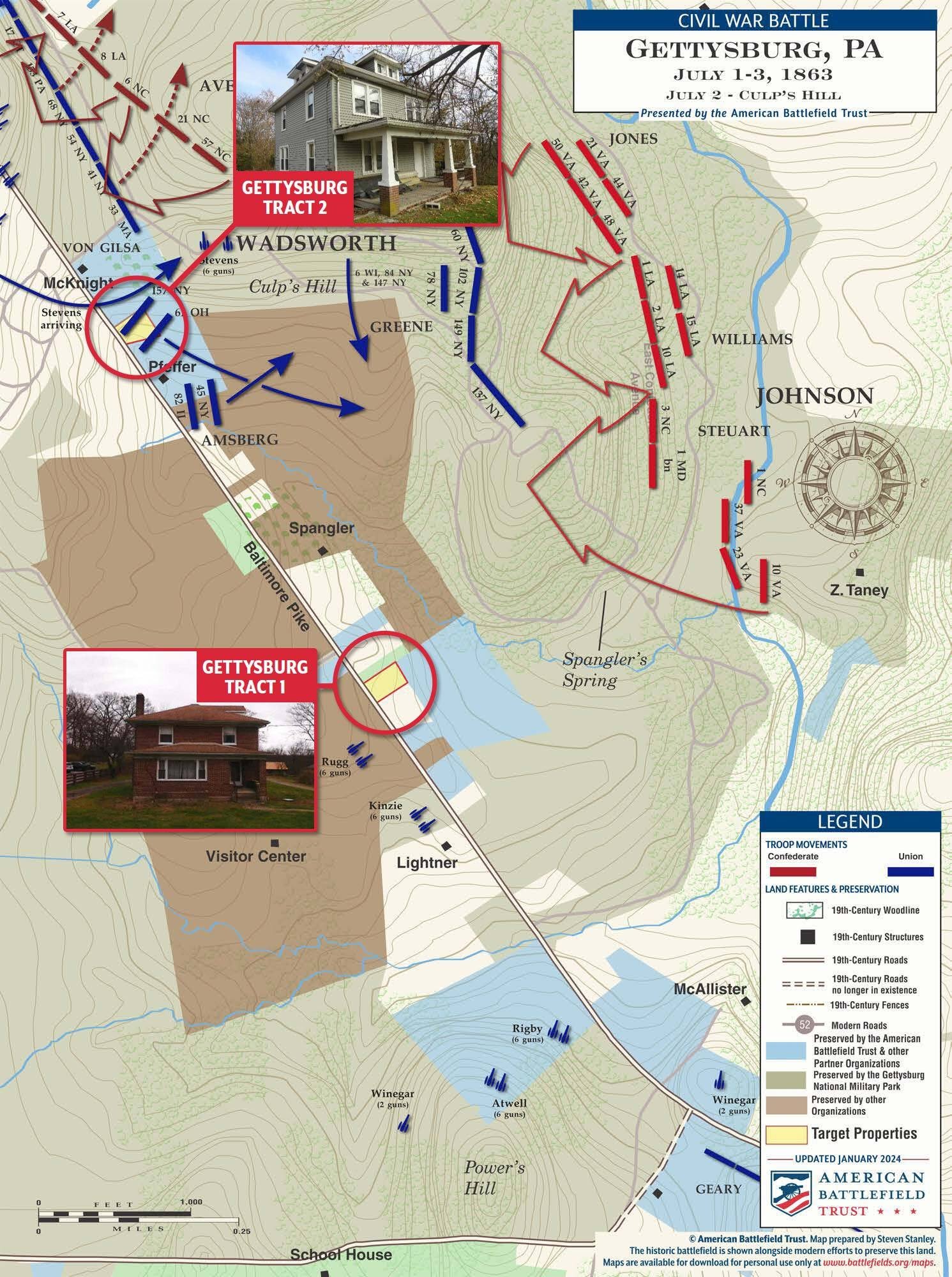I’m always eager to share victories with you for battlefield land that we’ve saved forever, but today I’m excited to share some different successes with you, restoration victories, including in Gettysburg, at Lookout Mountain, Tenn., and Eutaw Springs, S.C.
Our mission is to “Preserve. Educate. Inspire.” So, it’s not enough to just save battlefield land, we want to use it to teach and inspire future generations. To do that, we sometimes have to restore the landscape. We can’t just acquire lands that have been compromised and corrupted by decades of neglect and development and leave them as they are. We have to restore hallowed ground. Folks, I’m here to say, “Thank you!” Because together, with the help of our members, donors and partner organizations we have done that at these locations.
Hole in One
Entering Gettysburg National Military Park from the east, visitors have for years driven past glimpses of the abandoned and overgrown Mulligan McDuffers Adventure Golf & Ice Cream Parlor. With the help of our members and donors, this autumn we began removing the adventure park structures, hauling away old concrete and grading the land to lay down soil and grass seed at the site of an important position on the Union right flank during the Battle of Gettysburg.
Two artillery pieces of the 1st New York Light Artillery Battery M, commanded by Lt. Charles E. Winegar were positioned on the edge of the property, split between here and Power’s Hill, directly across Baltimore Pike. On the afternoon of July 2, 1863, 14 cannons were placed on Power’s Hill. In conjunction with 10 more nearby artillery pieces to the north along Baltimore Pike, the two cannons on this land were positioned to cover the Union right—specifically the low ground to the south of Culp’s Hill known as Spangler’s Spring and Spangler’s Meadow. Collectively, the Union cannons in the area unleashed such a destructive fire during the seven-hour battle near Culp’s Hill on July 3rd that Confederate Gen. George Steuart called his position near Spangler’s Spring “artillery hell.”
When the restoration work is completed here, visitors to the battlefield can once again envision cannons and caissons located on the ground and Lt. Winegar commanding “Fire!” rather than “Fore!” For that, we are grateful to you!
On Lookout Mountain
For decades, a former 1940s travel motel blemished approximately an acre of land next to the Chickamauga-Chattanooga National Military Park, hallowed ground that played an important role in the Battle of Lookout Mountain. In June 2023, with the unwavering support of our members and donors, the Trust was able to demolish the motel and lay down sod to restore the field.
Overlooking the Tennessee River, Lookout Mountain boasted a seemingly strong position for Confederate Gen. Braxton Bragg and his Army of Tennessee as they kept the Union Army pinned at Chattanooga. On November 24, 1863, after the successful Union capture of Orchard Knob the day prior, Gen. Joseph Hooker ordered his three divisions to attack the Confederate left at Lookout Mountain.
The Wauhatchie Pike, the main road over the mountain during the time of the battle, runs by and through this field, the route of Confederate retreat. Some Union soldiers also crossed over the tract as they began their ascension of the mountain, helping lead to Union success at Missionary Ridge the following day on November 25.
The preservation — and now restoration — of this tract will ensure it continues to tell the story of the Battle of Lookout Mountain for generations to come.
Eutaw Springs
Upon a roughly four-acre tract of land saved by the American Battlefield Trust — in collaboration with our partner on The Liberty Trail, the South Carolina Battleground Preservation Trust (SCBPT) — stands a spectacular, centuries-old oak tree, a witness to the Battle of Eutaw Springs on September 8, 1781, the last major engagement of the Revolutionary War in the Carolinas.
While fighting initially erupted a little over three miles west of the site, the morning of September 8 — when General Nathanael Greene’s column surprised a British patrol and foraging party — significant maneuvers and combat unfurled upon this land later in the day. All the while, the young oak tree stood as witness to a well-fought battle, after which the Continental Congress recognized Greene’s exceptional service with one of only seven gold medals given during the war.
The now-imposing tree then saw the nation and its people transform, including its surroundings which until this summer included modern features like a house, car port and chain link fence. Thanks to the generous help of our members, donors and partners its surrounding landscape has been restored to a grassy field reminiscent of September 1781.
It’s not enough to buy the land and declare “Victory! ... Battlefield saved!” Sometimes, that’s only half the battle. This work isn’t glamorous. It’s roll-up-your-sleeves hard work and it takes time and resources. But it’s absolutely necessary to create authentic battlefield experiences.
Thank you for the generous support that has helped us do the dirty work and restore this hallowed ground, and with it, share the stories of the history that happened here.
David N. Duncan, President
American Battlefield Trust




























